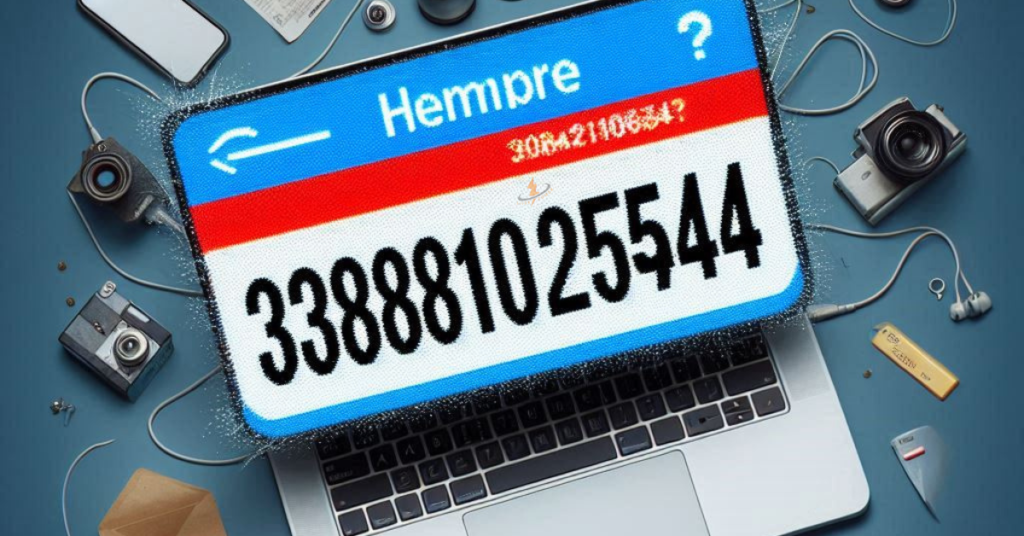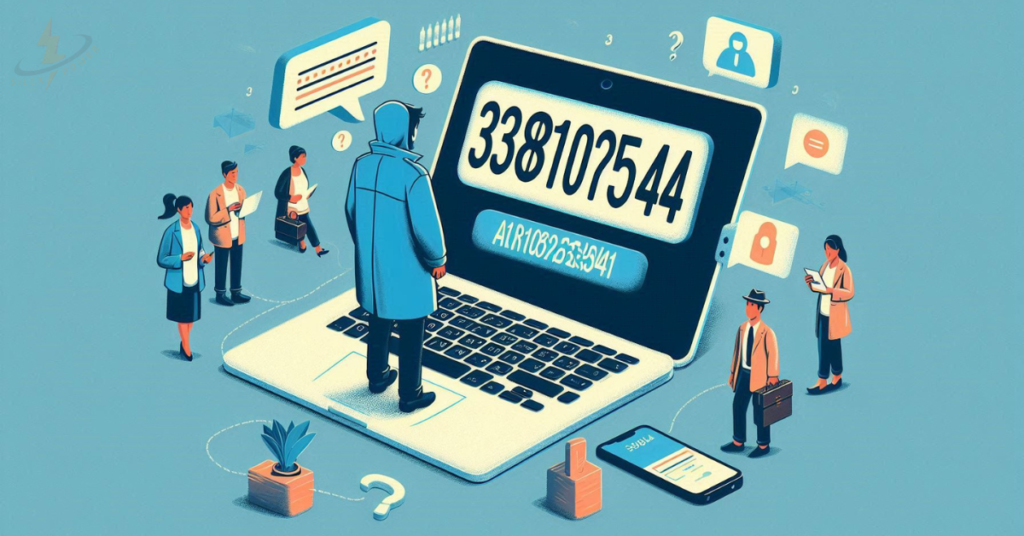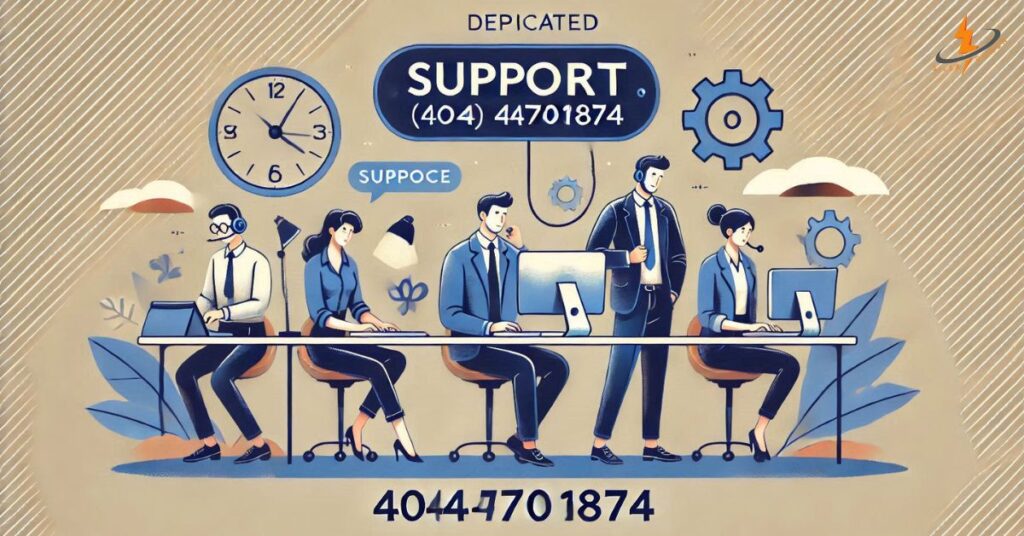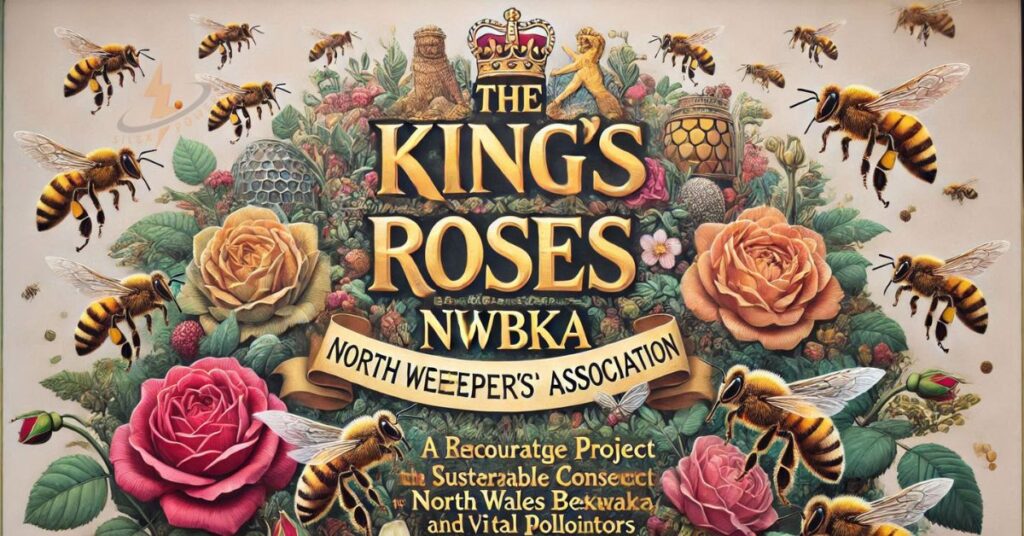Introduction:
Have you ever seen a strange number like 3381012544 pop up on your screen? Maybe it was in an email, a text message, or part of an online order. It might have looked random and confusing. But that number could actually be very important.
In today’s digital world, numbers like this help systems keep things organized. They work behind the scenes in places like online shopping, banking, and delivery tracking. These long strings of digits are called numerical identifiers. They are used every day to keep your life running smoothly.
Think of them like a name tag for your order or a label for your account. They help people and computers know exactly what belongs to you. Without them, systems would get messy, slow, or even crash. You may not always notice them, but they are doing a lot of work for you.
What Is a Numerical Identifier, and Why Does It Matter?
A numerical identifier is a unique set of numbers used to identify something specific in a system. Think of it like a digital name tag that points to one thing only—whether it’s an order, an account, or a product.
📌 Example: Your online food delivery might be tracked using an order number like 3381012544.
Everyday Situations Where You See Numbers Like 3381012544
You probably interact with numerical identifiers more than you realize:
Shopping: Order confirmation numbers
Banking: Account numbers or transaction IDs
Healthcare: Patient record IDs
School: Student registration numbers
Mobile phones: SIM or device ID numbers

🔍 Real-Life Scenario: You order shoes online, and your confirmation email includes 3381012544. That’s the system’s way of saying “These shoes belong to your order!”
Why These Numbers Keep the World Organized
Without unique numbers like 3381012544, systems would break down. Here’s how they help:
✅ Prevent confusion
✅ Speed up data searches
✅ Keep everything traceable
✅ Help customer service quickly find your info
The Anatomy of a Number: Breaking Down 3381012544
While it might seem random, these numbers often follow a pattern:
338: Could mean a specific store or location
101: Might represent a date or time
2544: Could be a sequential number or validation code
📌 Note: These meanings are usually internal to the organization that created the number.
Who Uses Numbers Like 3381012544? Major Industries
These numbers are critical in:
🛍️ E-commerce – Orders, invoices, and tracking
🏦 Banking – Transactions and customer IDs
📦 Logistics – Package tracking numbers
🏥 Healthcare – Patient and prescription IDs
📱 Telecom – SIM card and device identifiers
📚 Education – Student IDs and course numbers
How to Trace the Origin of 3381012544
Want to figure out where it came from? Here’s what to do:
🔎 Step 1: Google the number in quotes (“3381012544”)
📧 Step 2: Check your emails or messages
🧾 Step 3: Look at recent receipts or orders
📞 Step 4: Contact companies or service providers you’ve recently dealt with
Can You Decode It Yourself? The Truth About Reverse Engineering
Most of the time, you can’t break it down yourself unless you work at the company that created it. These numbers are built using secret logic—like encryption, checksums, and internal rules.
🔐 Takeaway: The true meaning of 3381012544 is often hidden behind the scenes.
How It Compares to Other ID Formats
Let’s compare different types of identifiers:
| Type | Format Example | Used For |
| ISBN | 978-3-16-148410-0 | Books |
| IMEI | 15-digit number | Mobile devices |
| SSN (USA) | XXX-XX-XXXX | Social security |
| VIN | 17-character alphanumeric | Vehicles |
| Numeric ID | 3381012544 | Orders, systems, accounts |
📌 Conclusion: All serve the same purpose—identifying something or someone uniquely.
How to Keep Your Identifiers Safe and Secure
🔒 Tips to protect numbers like 3381012544:
Don’t post it publicly
Use strong passwords and 2FA
Store in encrypted apps or password managers
Avoid clicking suspicious links in messages with IDs
🛡️ Protect your identifiers like you would your credit card number.
When Did This All Begin? A Brief History of Numerical IDs
It all started in the late 1900s when computers needed ways to keep track of records. What began in libraries, government databases, and banks quickly spread everywhere—from smartphones to smart homes.
💡 Today, every swipe, click, and tap might generate a unique ID.
Why Long Numbers Feel Intimidating (and How Systems Help)
Long strings like 3381012544 can feel overwhelming. That’s because our brains prefer chunks of information.
🧠 How systems help:
Break up numbers (e.g., 338-101-2544)
Use QR codes or barcodes instead
Add friendly labels like “Order #”
A Real-World Example: What Might 3381012544 Represent?
Let’s say it’s a shipping ID:
Order placed online
System creates 3381012544
Courier scans it at each checkpoint
You use the number to track delivery
It’s archived once delivered
🧾 It’s more than a number—it’s the digital path of your item.
Myths and Misconceptions About Numbers Like 3381012544
🚫 Myth: “It’s a scam number!”
✅ Truth: It’s probably a legitimate system ID.
🚫 Myth: “The government is tracking me!”
✅ Truth: Most identifiers are for logistics, not surveillance.
🚫 Myth: “I can find out everything from it!”
✅ Truth: Only the issuing system knows the details.
Popular Tools That Use These Identifiers Every Day
🖥️ Common platforms using IDs:
ERP systems (SAP, Oracle)
CRM software (Salesforce, HubSpot)
Tracking systems (UPS, FedEx, DHL)
Customer service (Zendesk, Freshdesk)
Mobile apps (Amazon, PayPal)
📊 Fact: These tools depend on identifiers to run smoothly.
How AI Uses Identifiers Like 3381012544
AI systems use these numbers to:
Match user data
Train algorithms
Detect fraud
Automate processes
🤖 No ID, no automation. Identifiers are like coordinates in the digital world.
The Future of Identifiers: What Comes After Numbers?
Tech is evolving. Soon we might use:
Biometrics: Fingerprints, retina scans
Blockchain IDs: Tamper-proof and decentralized
Smart Tags: Real-time sensors tied to live data
🔮 But numbers like 3381012544 will still be around—they’re fast, efficient, and universal.
Still Wondering What 3381012544 Is? Quick Checks
Ask yourself:
Did I shop online recently?
Did I receive a text or email with that number?
Is it related to work, school, or health records?
Did I contact a service that tracks things?
💡 Context is everything.
Be Smart: Don’t Share Sensitive Numbers Online
Posting numbers like 3381012544 on social media or public forums could lead to:
⚠️ Identity theft
⚠️ Unauthorized access
⚠️ Fraudulent activity
📌 Keep it private, especially if you’re not sure what it connects to.
SEO Summary (For Quick Understanding)
3381012544 is likely a numerical identifier tied to a digital system—used in tracking, verification, or user records. These numbers keep systems running smoothly and securely. If you see one, it usually connects to something you interacted with like a purchase, delivery, or service.

Final Thoughts: A World Run by Numbers
In the digital age, identifiers like 3381012544 aren’t just numbers—they’re essential building blocks of how systems recognize, track, and serve people.
📦 Your order.
💰 Your payment.
👤 Your profile.
All of it starts with a number.
Bonus Tips: How to Work With Unknown IDs Like a Pro
🔍 Use online reverse lookup tools
📑 Save receipts and confirmation emails
🧠 Learn to spot number patterns (e.g., date codes)
🤝 Ask customer support—they’re trained to trace these numbers
🛠️ Try apps that decode barcodes and QR codes


